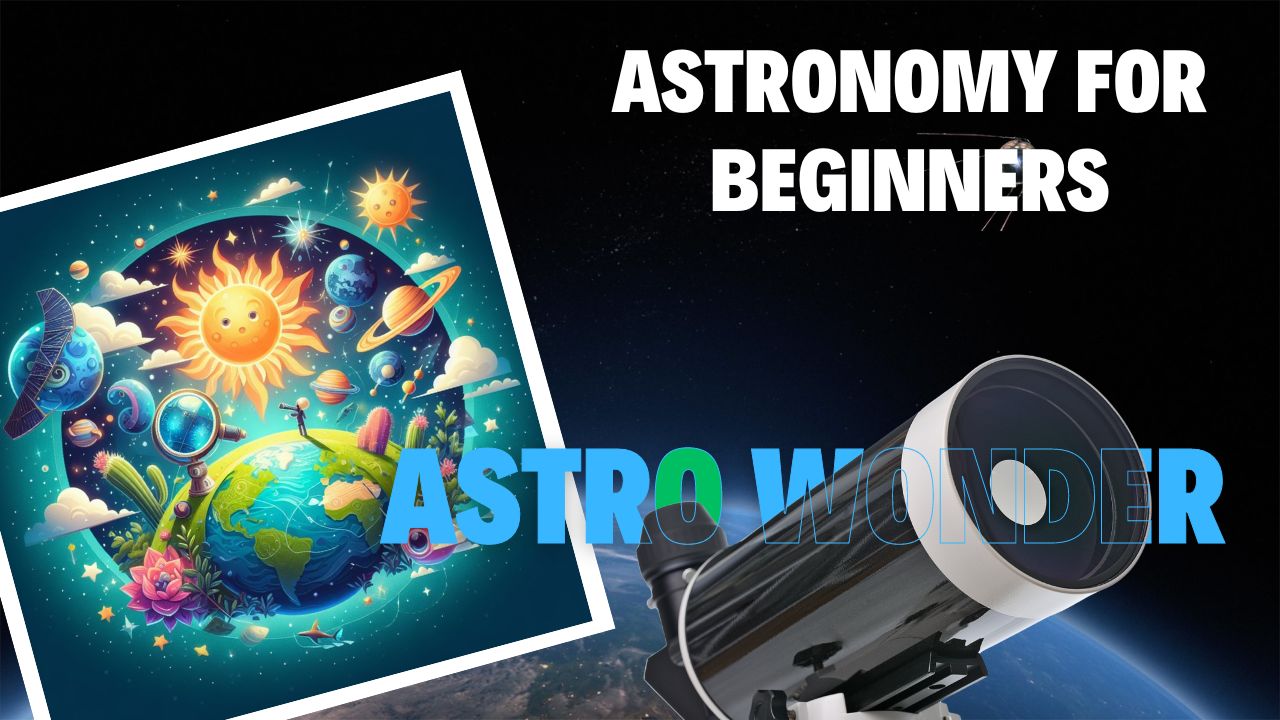Introduction Astronomy for beginners
Gazing up at the night sky, you are not just looking at stars—you are peering into the very fabric of the universe, its past, and perhaps, its future. For beginners, entering the world of astronomy can feel like unlocking a hidden door to an infinite expanse, brimming with wonders and cosmic mysteries waiting to be discovered. Whether your tools are as simple as your eyes or as advanced as a telescope, the universe has much to offer from the comfort of Earth. Let’s embark on a journey through the cosmos, starting right from your backyard.

Embrace the Cosmos: Where to Begin?
Find Your Stargazing Haven
Embarking on your astronomical journey begins with the critical decision of selecting the perfect viewing location. It may come as a surprise, but locations as simple as your home window, your cozy balcony, the confines of your backyard, or the serenity of a nearby park can all transform into your very own personal observatory spaces. However, to truly enhance your stargazing experience and make it as fulfilling as possible, it is highly recommended to scout for a site that is characterized by minimal light pollution.
The Bortle scale, which serves as an insightful measure of the night sky’s brightness levels, can be an invaluable tool in helping you estimate which celestial wonders you might be able to admire from your carefully chosen location. Various websites such as clearoutside.com offer a convenient service, enabling you to check the Bortle class specific to your area. This functionality sets you up with realistic expectations, thus significantly enriching your astronomical observations and making your star-gazing sessions even more rewarding.
Orient Yourself
Understanding the basic cardinal directions from your observation point is pivotal. The movement of planets across the sky mirrors that of the sun and moon, rising in the east and setting in the west. Familiarizing yourself with the sky’s layout and learning how to estimate distances using simple methods, such as the width of your outstretched fist, will make locating celestial objects easier. Recognizing the bright stars and constellations as they change with the seasons provides a natural roadmap for navigating the night sky.
Choose Your Tools
While the allure of owning a telescope is strong for many beginners, it’s not a necessity to begin your astronomical explorations. A good smartphone application can be your guide, pointing out visible objects and their locations in the sky. For those ready to take a step further, binoculars offer a bridge between naked-eye observing and telescopic viewing, revealing the craters of the moon, Jupiter’s moons, and the colors of Mars with minimal investment.
For those drawn to the depths of space, a telescope opens up a new realm of exploration. Starting with a smaller, portable model is advisable, as it provides a balance between capability and ease of use.
Learning and Observation Tips
Observing the moon is an excellent starting point due to its accessibility and the dynamic views it offers throughout its phases. Lesser-known objects, such as satellites and even the International Space Station, present moving targets that add variety to your observations.

Share the Wonder
Astronomy is not just a solitary pursuit but a communal experience. Sharing your knowledge and observations can enhance your enjoyment and spread interest in the night sky. Taking it a step further by participating in sidewalk astronomy or engaging with communities like The Planetary Society can enrich your experience and connect you with like-minded enthusiasts.
Common Queries from Aspiring Astronomers
How Do I Start Learning Astronomy?
Begin by spending time under the night sky and familiarizing yourself with the major constellations and planets. Use apps and online resources to guide your observations and consider joining a local astronomy club for hands-on learning.
How Can I Teach Myself Astronomy?
Self-education in astronomy is highly achievable through a plethora of books, online courses, and by actively observing the sky. Setting small, achievable goals, such as identifying new constellations or learning about cosmic phenomena, can structure your learning path.
Where Should I Start with Astronomy?
Starting with naked-eye observations and gradually incorporating tools like binoculars or telescopes as you become more comfortable is a practical approach. Begin with easily identifiable objects like the Moon and planets before delving into deep-sky objects.
What Are the Basics of Astronomy?
The basics include understanding the movement of celestial bodies, recognizing constellations, identifying planets and stars, and learning the phases of the Moon. Grasping these fundamentals will lay a solid foundation for further exploration.

Conclusion Astronomy for Noobs
Astronomy offers a unique blend of science, wonder, and exploration. It invites us not only to observe the universe but to understand our place within it. As you embark on your astronomical journey, let curiosity be your guide and the night sky your limitless canvas. Remember, each night brings a new opportunity to connect with the cosmos, right from your own slice of Earth.
So, set your sights on the stars. The universe awaits.







